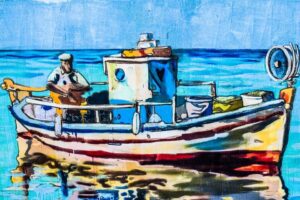Management
Choking on the Landing Obligation
Choking on the Landing Obligation:
mixed messages, tough questions and dissenting views in Brussels
Brussels, 31st of May 2018
Brian O”Riordan
The Landing Obligation (LO) is one of the most far reaching and controversial measures to be introduced into the reformed Common Fisheries Policy (CFP) of 2013. Designed to address both ethical (food waste) and conservation (selectivity/ overfishing) issues, it arrived like a bolt out of the blue following a highly charged campaign directed both at the public at large and at European decision takers and led by TV personalities. It was not at all anticipated in the 2009 Green Paper, and little time was allocated to working out how such a measure could be implemented in practice. DG Mare’s preferred approach to implementation has been to gradually phase in the LO over a 4-year period (2015 to 2019), addressing issues and solving problems as they arise, rather than trying to anticipate and to solve problems in advance.
Three and half years into implementation, and with just 7 months to go before its full entry into force, it is to be hoped that by now most of the wrinkles on the LO have been ironed out.
This was the impression given by Mr Karmenu Vella, Commissioner for Maritime Affairs and Fisheries, in a speech to the Fisheries Committee of European Parliament on May 15. He highlighted that: “The rules are clear: as of 1 January 2019, the landing obligation will apply to all catches of species subject to catch limits and, in the Mediterranean, subject to minimum sizes. These are the rules of the CFP, agreed by all, and well-known to everybody for more than four years now. Rules cannot be changed half-time through a match…. It would undermine the reformed CFP. And it would damage our credibility.”
However, such clarity of vision and purpose were lacking from discussions in the European Parliament on the previous day during a workshop on the “Landing Obligation and Choke Species in Multispecies and Mixed Fisheries”. Following the presentation and discussions of 3 case studies from the North-western Waters, the North Sea, and South-western waters, Mr Alain Cadec, Chair of the Fisheries Committee summed up by stating that: The diagnosis is very clear: uncertainty, difficulty, complexity… I don’t regret voting against the Landing Obligation”.
Not one of the 9 MEPs who spoke during the discussion defended the Landing Obligation (LO). One highlighted that no solutions had been offered by the scientists, and that the LO was not implementable on January 1 2019. Another talked about confusion and problems, and called for a longer transition period and more flexibility. Yet another stated the LO was not compatible with a Total Allowable Catch [TAC] / quota system and was difficult to square with mixed fisheries. There was even a call for a Plan B.
The DG Mare representative agreed that there was insecurity and chaos but opined that the LO “tool box” (quota swaps/ flexibility, de minimis provisions, TAC increases, exemptions, etc) is not being used sufficiently. The representative also observed that scientists are unable to give a full picture of the choke problem; “chokes are not choking because the LO is not yet fully implemented”. Given that the LO is being implemented progressively, more time and patience are needed to see how things evolve, and a need to look at the LO “differently”, she concluded.
The North Sea case highlighted the complexity of defining specific fisheries, categorized as they are by a large variety of metiers, seasons, species etc. The presenter, a French scientist, highlighted that fishing mortality in the North Sea is rising again, and that past gains may be lost. She also noted that choke issues will only become a problem if the LO is strictly implemented. Currently choke problems have not been observed or reported to the STECF she observed.
The Southwestern waters case highlighted that the combination of FMSY and LO will create serious problems and will close fisheries. Choke is a dynamic issue, especially given climate change, it was observed. Choke impact would change over time – a complicated situation that is likely to remain complicated, it was concluded.
Various questions were raised by the MEPs, including one from a Galician MEP on the impact of the LO on small-scale fisheries given the inequality of quota distribution. In Galicia, Europe’s most important fishing and most fishery dependent region, 90% of the 4,500 strong fishing vessel fleet is classed as “artes menores”, comprising vessels with an average length of 8.8 metres using passive gears. Most of these vessels operate in mixed fisheries, where both quota and non-quota species are found.
However, as in other European Member States, the small-scale passive gear fleet has little access to quota as the fleet lacks the necessary catch history to qualify for such. Quota management was introduced as a measure for larger scale fleets and is now being imposed on small-scale fleets through the LO, despite most of the quota being allocated to the larger scale fleet. This makes quota management, and thus the LO, unfairly discriminatory against smaller vessels.
There was also a question asked on behalf of the Scottish demersal trawler operators, for whom one of the main target species is cod, and who will be heavily impacted by chokes. They asked which “pillar” of the CFP should be sacrificed – the fishing levels set at MSY, the implementation of the LO, or the fishermen.
The North Sea case presenter observed that scrapping the LO will not solve anything, that the discard problem will not resolve itself on its own. The LO had been a useful tool for raising awareness about the problem of discards she felt, but now it was time to look at two different but linked objectives:
a) the desire to reduce discards, and
b) the desire to land all catches.
The latter is often seen as the worst option, but also uncontrolled discarding means uncontrolled fishing effort. She felt that “accurately documenting discards at sea is of higher priority to achieving sustainability than the obligation to land ALL fish caught”. As regards small-scale fisheries (SSF), she felt that a lot of research had been done, and that the issue of SSF discards could be encapsulated by the maxim that, like children, small boats = small problems, big boats = big problems. Such a view is not reflected in the different realities that the different fleets have to deal with, especially the restricted location and seasonal nature of small-scale fishing operations compared to the highly mobile nature, wider range and year-round activity of larger scale operations. Whether large or small in scale, LIFE considers that for all fleet segments the treat of imminent bankruptcy is a big problem irrespective of the size of the vessel.
Such a view was expressed by the Spanish scientist presenting the Southwestern Waters case. He felt that as SSF and LSF are quite different, a different approach is needed for each fleet segment.
The North western waters presenter, an Irish scientist, responded to the Scottish question by saying that if the fisheries sector did not fish in a sustainable way, it was not a matter of giving up on fishermen, but rather fishermen would lose their markets due to consumer pressures. That was the choice he felt; either comply with the LO or lose your markets. On SSF, allocation was a national issue he felt, and it was for states to decide how they allocated quota and treated SSF.
In the view of the Low Impact Fishers of Europe (LIFE) the LO will have a disproportionate impact on small-scale polyvalent passive gear fishing operations (vessels under 12 metres in length using non-towed gears). In the main, these operations are highly selective, with very low rates of discarding compared to trawling and other towed gears. Just because there is less discarding in the SSF doesn’t mean that they are impacted less by the LO. The LO has surely been designed with the large scale mobile gear sector in mind, not the low impact passive gear sector. This is reflected in the fact that in the last few decades, 3924 scientific papers have been published related to the discard issues, 3760 have focused on large scale operations and only 164 have considered the implications for SSF.
The lack of access of small-scale fishing operators to the quota necessary to remain viable when the LO is fully implemented in 2019 makes them highly vulnerable to “choking” and being forced either to tie up and go bankrupt, or to break the law and face the consequences. For SSF, LIFE fears that the zero-discard policy could well become a zero-fishing, zero-income policy for the SSF.
LIFE therefore advocates a two-pronged approach to the LO for SSF. First and foremost, a requisite and fair quota allocation needs to be provided to enable SSF to plan and manage their operations. Such an allocation should involve some pooling of the quota which can be drawn on as needed to deal with the choke problem as it arises. Secondly, for the inshore segment of the SSF fleet, a move towards effort management could provide a fairer and more effective way to deal both with the problem of access and that of discarding.
Further information:
Vella’s speech to the Parliament the following day https://ec.europa.eu/commission/commissioners/2014-2019/vella/announcements/speech-commissioner-vella-european-parliament-pech-committee_en
DGMare information: https://ec.europa.eu/fisheries/cfp/fishing_rules/discards/
Pêche Committee Workshop on the Landing Obligation and Choke Species: https://research4committees.blog/2018/05/28/pech-workshop-landing-obligation-and-choke-species-in-multispecies-and-mixed-fisheries-2/
Small-scale fisheries and the zero-discard target. European Parliament DG for Internal Policies. 2015 http://www.europarl.europa.eu/RegData/etudes/STUD/2015/540360/IPOL_STU(2015)540360_EN.pdf
♦ ♦ ♦

Input by members from Spain on a Management Plan for the Med coast- ENG/ES
The member organizations of LIFE in Spain present amendments to the “Comprehensive Management Plan for the conservation of fishery resources affected by fisheries carried out with purse seines, trawls and passive gears in the Mediterranean coast of Spain”.
Access the official PR in ENG/ES here
Access the official document in ES here
Las organizaciones miembro de LIFE en el mediterráneo español presentan alegaciones al “Plan de Gestión Integral para la conservación de los recursos pesqueros en el Mediterráneo afectados por las pesquerías realizadas con redes de cerco, redes de arrastre y artes fijos y menores”.
Acceda a la Nota de prensa oficial en ENG / ES aquí
Acceda al documento oficial en ES aquí

Concerns rise over electric pulse fishing
Concerns rise over electric pulse fishing
Tuesday, September 5th
Jeremy Percy
A meeting in Nieuwpoort, Belgium on September 1st, organized by Belgian inshore fisherman Jan De Jonghe and attended by a variety of commercial fishermen from the UK, Belgium and Holland as well as staff from the Low Impact Fishers of Europe Platform [LIFE] and researchers from the Marine Institute, highlighted the increasing concerns over the negative impacts of the massive and uncontrolled rise in electric pulse beamers in the southern North Sea. A delegation from the meeting later met with a senior official from the Dutch government, Ms Bea Deetman, responsible for European fishing authorizations and regulations. Electric pulse trawlers do what it says on the tin, they fire electric pulses into the seabed and this effectively replaces the job that tickler chains normally do to push the fish up and into the path of the net. The gear used is much lighter than traditional beam trawls, uses less fuel to tow, appears to catch more Sole than Plaice and has much lower rates of bycatch.
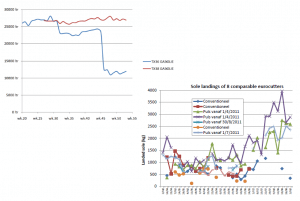
So far so good, but despite the protestations of the pulse fishermen that the outputs in terms of both pulse shape and power can be and are strictly controlled, observations by other fishermen and scientists contradict the view expressed that it does no harm to either the target or other species on and in the seabed.
The use of electricity [as well as poisons and explosives] is specifically banned under the Common Fisheries Policy so all those currently using this gear [Dutch national and subsequently UK flag ships] are operating under a dispensation from the European Commission. They benefitted from an original derogation for 5% of the member state beam trawl fleet, together in some cases with very significant financial support from Europe and this number then increased dramatically through the imaginative use of Article 14 of the new CFP that states that “Member States may conduct pilot projects, based on the best available scientific advice and taking into account the opinions of the relevant Advisory Councils, with the aim of fully exploring all practicable methods for the avoidance, minimisation and elimination of unwanted catches in a fishery”.
What is abundantly clear is that there has been insufficient research and effective trials before the Commission, the Dutch government and beam trawl fishermen jumped in with both feet on the basis of the apparent benefits of the method [especially to profit margins]. Current numbers of pulse beamers are well over a hundred and probably increasing with much of the focus of effort on the southern North Sea. The pictures below illustrate the migration of what were beam trawlers converted to pulse fishing to the previously unfished areas off the Thames.
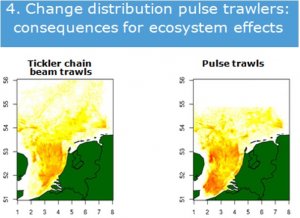
The meeting heard testimonies from a range of fishermen, all of whom highlighted that there had been a drastic decline in sole, cod and seabass since the introduction of large scale pulse fishing 3 years ago, some reported seeing and hauling up large quantities of dead fish. Some referred to the Southern North Sea as a dead zone. Others mentioned that the only fish they had seen were (spotted) dogfish and rays.
The concerns expressed were really summed up by a note written by Tom Brown of the Ramsgate Fishermen’s Association, a précis of which is reproduced below:
“In the Thames estuary, we have an area between the Knock and Falls that is just outside our 12 mile limit. [see pictures above. Ed] In the past the traditional beam trawlers could not work there because of the soft ground, we only had the occasional French trawlers. However, for the past four years we have been inundated with Pulse trawlers. This area is well known to us as being a Dover sole feeder area for the Thames estuary. In the wintertime when the sea turns cold the sole heads for deep water and buries itself in the mud. With the advent of the Pulse trawlers they have become vulnerable. When the Pulse Beamers first fished this area they couldn’t believe how lucrative it could be, so much so that they were rushing back to port changing crews and coming back out again. To top it all they were bragging about it on the radio.
Four years later the Thames estuary has become almost devoid of fish to the point that a number of fishermen have gone out of business and the boats fishing in the Estuary declined. Possibly this is partially due to the excessive dredging that is being carried out in the Thames but I’m sure also Pulse trawling plays its part.
Our local boats have noticed that where the Pulse trawlers have been working there is any amount of dead shellfish, starfish and small mixed fish. It appears that when working deep water, they can turn the current up and in shallow water reduce it so as not to damage other fish. We are led to understand that in order to maximise the catching ability, the power is turned up all the time. We are not in the way of progress but it must not be at the expense of the environment and other fishermen.
We are being informed that Pulse fishing is up to 3 times more efficient as normal fishing. If that is the case, are those countries that operate pulse fishing going to reduce their fishing effort pro rata? If pulse trawling was rolled out across the EU in order to prevent technical creep I presume everybody will have to reduce their fishing effort accordingly to stay within the present parameters and not destroy the stocks again”.
Specific comments from local fishermen include:
- “It’s like fishing in a graveyard after the pulse trawlers have been in the area, virtually everything is dead”
- “This is absolutely devastating for us because we have never caught so many fish that were already dead”
- “I have fished there for 30 years and have never seen anything like it [electric fishing].
- “They are just sitting there, hoovering up the Sole waiting to go up the Thames to spawn”
- “we told our authorities that the damage was caused by the electric trawlers but they didn’t believe us”
It’s not just inshore fishermen from around the southern North Sea who are concerned. The ICES Working Group on Electrical Trawling met three times (22–24/10/2014; 10–12/11/2015, and 17–19/01/2017) to discuss the ongoing research projects in Belgium, the Netherlands, and Germany and provide an overview of the state of the art knowledge of the ecological effects. Their final report states that; ‘The sole pulse applies a higher frequency that invokes a cramp response that immobilise the fish species facilitating the catching process. The use of electricity in fishing has raised considerable concern among stakeholders which is mainly focused on the unknown effects on marine organisms and the functioning of the benthic ecosystem but also altered fishing efforts & catch efficiencies’. It goes on to say that ‘……… Exposure to the sole pulse stimuli invoked vertebral fractures and associated haemorrhages in roundfish species (cod), but not in flatfish species (sole, plaice, dab) or seabass. The results suggest that fractures are restricted to the larger size classes of cod that are retained in the net…..’
The report concludes that “Although the irreversible effects of electrical stimulation seem to be restricted to the vertebral fractures in cod and whiting, further research on the effects of electrical stimulation on marine organisms and ecosystem functioning is needed to assess the effects on the scale of the North Sea”
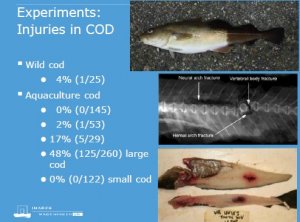
These comments underline the concerns expressed at the meeting. The Genie is out of the bottle and despite clear evidence, both scientific and anecdotal, that there are significant adverse impacts from electric pulse fishing, there appears to be no reduction in the headlong rush by managers and beam trawl fishermen for this sort of gear.
Just what the public will make of the fish on their plate having been electrocuted and their backs broken in the name of increased profits and reduced physical impacts remains to be seen although some of the larger buyers are avoiding purchasing electrofished products at present.
As Tom Brown’s note makes clear, the increased use of electric pulse fishing by increasing numbers of large vessels is undoubtedly having an adverse impact on stocks, especially those previously unfished. Whilst there is an argument that fishing effort, by whatever means, is ultimately controlled by quota, the ability of electric gears to focus effort on a relatively small area is of concern, as is the unknown and possibly long term effects on the wider marine ecosystem.
No one really expects the Commission to withdraw its current derogation but they should certainly act now contain effort, spatially, numerically and in terms of effective management of impacts until such time as there has been significantly more research into the potentially damaging aspects of this form of fishing.
If we should have learnt anything from the abject failures of fisheries management over two centuries it is that no amount of short term profit for the few should be used as a reason or excuse for ignoring longer term impacts and the rights of the many.
Access the official testimonies from the meeting here
♦ ♦ ♦
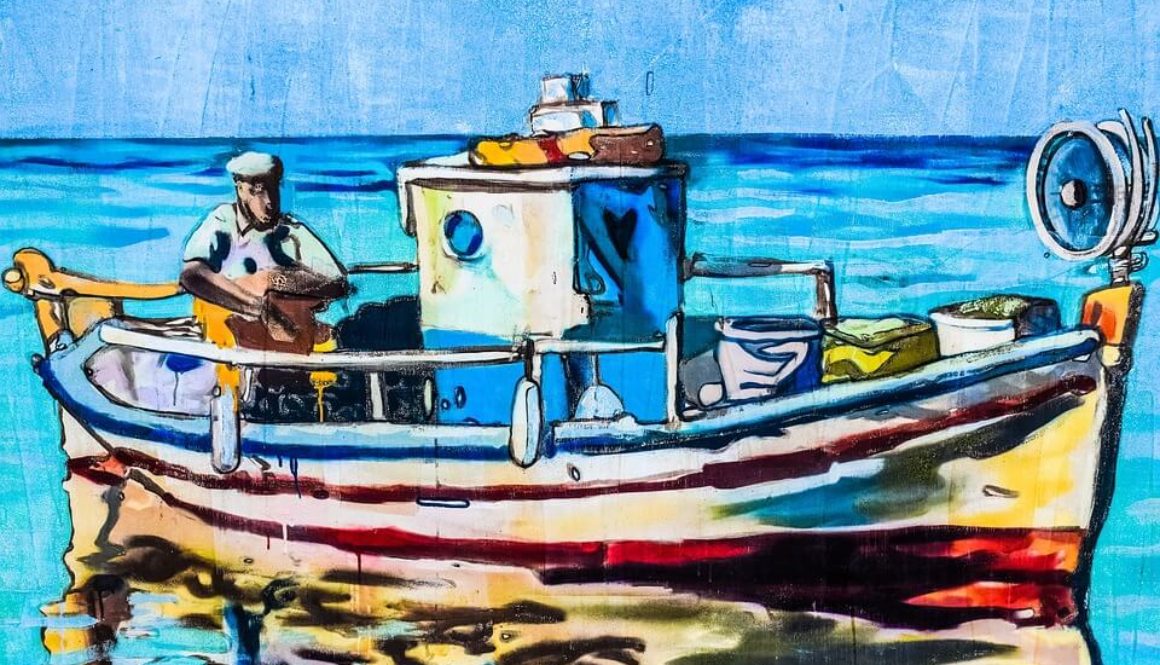
A Question of Balance
A Question of Balance:
Small-scale and large-scale fleets could play complementary roles
given a level playing field.
Brussels, 20 June 2017
Brian O’Riordan
There is self-evidently a place and a need for both small and larger scale fishing fleets, but this requires first of all establishing a level playing field that ensures fair access to resources, to markets, to sector support, and to decision taking processes for all fleet segments.
When Commissioner Vella asked LIFE whether or not all small-scale fishing activities in the Mediterranean and Black Sea were really low impact, he had already answered his own question. Earlier in his speech to the fishery stakeholders in Malta on 29 March 2017, European Commissioner for Maritime Affairs and Fisheries had pointed out that 80% of the Mediterranean “fleet belongs to small-scale fishermen (with vessels under 10m long), who fish a quarter of the total catches”. This means that, according to Commissioner Vella, just 20% of the fleet, the larger-scale segment, take 75% of the catch, thus having by far a greater impact on fish stocks and the marine environment than 80% of the fleet with 25% of the catch[1].
Of course, not all small-scale activities are low in impact, and not all larger scale fishing is destructive. Stocks may be more vulnerable during certain seasons when they aggregate to spawn, feed, and develop. Both small and large-scale activities that target these aggregations may have significant impacts on them. High concentrations of small scale gears in inshore waters, for example, despite being worked from very small [<6m] vessels may have a big impact on these aggregations. So too, relatively small vessels kitted out with modern fish finding and navigation technology, gear haulers, and powerful engines, that fish intensively may also have a considerable impact. Small, like large, also requires effective management and regulation, but the same regulatory and management measures are not necessarily appropriate for these two fleet segments.
Small size can be an indicator of sustainability, in as much as small in fishery terms implies using gears low of environmental impact, vessels with a relatively low carbon foot print, with activities rooted in coastal communities, undertaken by small family based enterprises that provide jobs and income in areas with few economic or employment alternatives, and where women play a key role, albeit often unseen and unrewarded economically. It is certainly the case that it is far easier for a vessel pulling a trawl net the size of a football pitch, with an engine power measured in the 1000’s of kilowatts, or a seiner using heavy metal wire rather than the traditional ropes to do far more damage, far more quickly than the average small scale vessel.
In this sense, the Members of the European Platform “Low Impact Fishers of Europe (LIFE)” aspire to having the least possible impact on both the fish stocks and on the fishing grounds through adopting a best practice approach – using the right gear, at the right time, in the right place. Our answer to Mr Vella’s question, is therefore: “No, of course not. Not all small-scale fishing activities are low in impact, but they could be if given a fair chance and adequate support.”
LIFE has always held that both large-scale (lsf) and small-scale (ssf) fishing activities, at all stages of the supply chain from catch to consumption, are needed, and play complimentary roles in providing income, employment, and food supplies, creating wealth, and contributing to the culture and social wellbeing of coastal communities. Stocks further off shore may be more effectively caught by larger vessels able to deal safely with offshore conditions, and with the capacity to store larger catches. Bulk landings from larger scale fleets may be more suitable for large processing facilities supplying mass retail markets. At the same time, there are advantages to reserving inshore areas, for smaller scale fixed gear operators, who have traditionally supplied high quality fresh fish to local and more niche markets. These coastal fishermen and fisheries also underpin numerous vulnerable coastal communities, often with few alternative employment opportunities, not just in terms of food production but also for the added value they bring to the tourist experience, the significant number of shore based jobs they support and the maintenance of maritime related knowledge and skills.
Indeed, it is in everyone’s interest that the intrinsic complementarity between large scale and small-scale, artisanal and industrial fleets, and between traditional and modern activities should be recognized, and synergies identified and capitalized on. This can only be done if a level playing field is established where competition and conflicts do not put one or other sector at a disadvantage, where each fleet segment is provided with a fair and transparent share of access rights, where good practice is rewarded and innovation encouraged.
This also requires a governance system that puts those who fish and are active in the supply chain centre stage, enabling them to engage meaningfully in the decision-making processes that affect both them and the resources they depend on. Such governance systems do exist, and require that authorities and fishers sit together on co-management committees to solve problems and agree courses of action together, with these committees fully empowered by the administration through formal power devolution procedures. It is to be welcomed that the Government of Catalonia is now making such co-management law through a new decree http://international-view.cat/2017/05/23/its-the-governance-stupid/.
By contrast, for over 30 years, fisheries in Europe have been governed by the Common Fisheries Policy (CFP), a policy that has turned a blind eye to small scale fisheries, treating it as a national issue, and making exceptions for smaller vessels to many EU rules. This has proved to be a poisoned chalice for the small-scale sector, which has effectively been often operating under the regulatory radar. It has meant that catches from the sector have not been properly recorded and documented, and this has put smaller vessels at a disadvantage when it comes to quota allocation. It has also meant that small scale fishing organizations have been disempowered from engaging in decision taking processes at EU level, as no support has been provided to establishing structures like small scale producer organizations.
This aspect was recently highlighted by a special report from the European Court of Auditors on EU fisheries controls http://www.eca.europa.eu/en/Pages/DocItem.aspx?did=41459. This highlighted that, as a result of the application of the rules of the Control Regulation, 89% of the EU fleet, 95% of which comprises vessels under 12 metres long, is not monitored by a vessel monitoring system (VMS). This significantly hinders effective fisheries management in some fisheries and for some species. The report also highlighted that a lack of transparency in the way that some producer organizations manage quotas increases the risk that specific interests of certain economic operators are favoured at the expense of others, creating unequal competition between fleet segments.
In many EU member states, small scale activities, traditionally polyvalent using a variety of gears around the year, targeting a seasonally diverse array of species – right gear, right place, right time – are now only permitted to catch a limited range of non-quota species. Thus, for example in the UK the small scale under 10 metre sector, representing 77% of the fleet by number, has access to only 1.5% of the UK quota by tonnage, and must rely mainly on non-quota species like whelk, brown crab and lobster. This increases pressure on these species, and tends to flood markets, often depressing prices.
In Ireland, small-scale fishers from island communities are not allowed to catch the fish in their coastal waters. Meanwhile, supertrawlers that fish around the world are allowed to, catching the species traditionally caught by them and hauling away their gear with impunity. Irish islanders, represented by the Irish Islands Marine Resource Organisation (IIMRO), are proposing that Ireland adopts a system of “heritage licences”, allocated to smaller scale fixed gear vessels, owned and operated by fishers from island communities. These vessels would operate in waters adjacent to the islands, and would be managed under a locally led co-management regime.
Financial support is another area where larger scale fishing activities have gained huge advantages at the expense of small-scale activities. Whilst it is often said that subsidies to industrial fishing is subsidizing overfishing, at least in Europe, it could be said that in the case of the small-scale sector, subsidies have been subsidizing underfishing.
In Europe, over the period 2000 to 2006, the large majority of subsidies for vessel construction and modernization went to vessels over 24 metres, whilst vessels under 12 metres received twice as much funding for scrapping as they did for modernisation and construction[2].
A recent study by the University of British Colombia reports that at global level, 84% of subsidies to the fishing sector, valued at 35 billion US$, go to vessels over 24 metres in length. It highlights how fuel subsidies promote fuel-inefficient technology and help large-scale fishers stay in business, even when operating costs exceed total revenue gained from fishing. Subsidies for port development and boat construction, renewal and modernization also give the large-scale fisheries sector significant advantages over their small-scale counterparts, who receive only a small percentage of those subsidies https://www.eurekalert.org/pub_releases/2017-06/uobc-spo053117.php.
So, how can a more level playing field and a more transparent and fairer system for allocating fishing rights and financial support be established?
First and foremost, the small-scale sector must be brought into the regulatory fold. This could be done by establishing a differentiated approach to managing small and large-scale fishing activities, based on spatial management, with exclusive fishing areas designated for small scale, low impact fixed gears, and confining the activities of more heavily impacting mobile gears further out to sea.
The benefits of such an approach are highlighted in a recent report by the Scottish Creel Fishermen’s Federation (SCFF) http://www.scottishcreelfishermensfederation.co.uk/report.htm. The SCFF point out that the combination of Marine Scotland’s “hands off” approach, and de facto creel limits imposed by the trawl sector has resulted in trawlers managing to secure 87.7% of the Scottish Nephrops prawn catch; a level of access to stocks, according to SCFF, not warranted by the trawl sector’s economic or environmental performance, or indeed any coherent performance indicator. Fishing with creels not only delivers more jobs per tonne caught, it is economically more efficient (i.e. profitable) to catch a tonne of Nephrops using creels rather than trawling the sea bed. By reallocating access to Nephrops in favour of creeling, and by establishing creel only areas, Marine Scotland has the opportunity to increase total employment, total household incomes, total profits /economic efficiency and the number of individual fishing businesses in coastal areas. Many of these areas are remote and suffer from a narrow range of economic opportunity.
Secondly, a differentiated approach would involve establishing different access regimes for polyvalent low impact small scale fixed gear operators on the one hand, and larger scale mobile gear operators on the other. The former would involve regulating access using input controls, such as days at sea, spatial and temporary fishery closures, and putting restrictions on the quantity of gear that any vessel could deploy within a given time frame. The latter regime for larger scale operators could involve a mixture of both input (restricting effort, for example, through days at sea) and output (restricting catches, for example, through quotas) controls.
Il- quid pro quo of this would be that ssf operators would need to engage more proactively with scientists and fishery managers in providing data on fish catches generated by them using new technologies available thanks to the development of mobile applications for smart phones and tablets.
New, simple and powerful, electronic technologies are available that make the whole process of data logging at sea relatively easy to do http://abalobi.info/, using smart phones and tablets. Already such mobile technologies are being used by fishers to improve their marketing arrangements and to engage more effectively as data providers in fisheries management. Such data gathering tools could also be developed as electronic log books.
The current focus on the blue economy, sustainable development goals, and climate change provides a useful opportunity to reflect on the state of play in European fisheries, to highlight some hard facts, and put forward solutions.
LIFE exists to provide a dedicated and specific voice for the previously silent majority of fishers in European waters. LIFE also believes that there is a need for much increased transparency, a fairer and more equitable approach to access to the resource, a differentiation in some form between mobile and passive gears and vitally, much improved co-management systems for fisheries in coastal near-shore waters.
Exploiting the synergies and complementarities between small and large-scale fleets should provide the possibility for putting European fisheries on a fairer and more sustainable footing for the future. It is an opportunity there for the taking and one that all concerned ignore at their peril.
[1] https://ec.europa.eu/commission/commissioners/2014-2019/vella/announcements/press-statement-meidterranean-fisheries-conference-malta_en
[2] http://www.smh.com.au//breaking-news-world/eu-subsidies-have-encouraged-overfishing-study-20100331-re68.html
♦ ♦ ♦
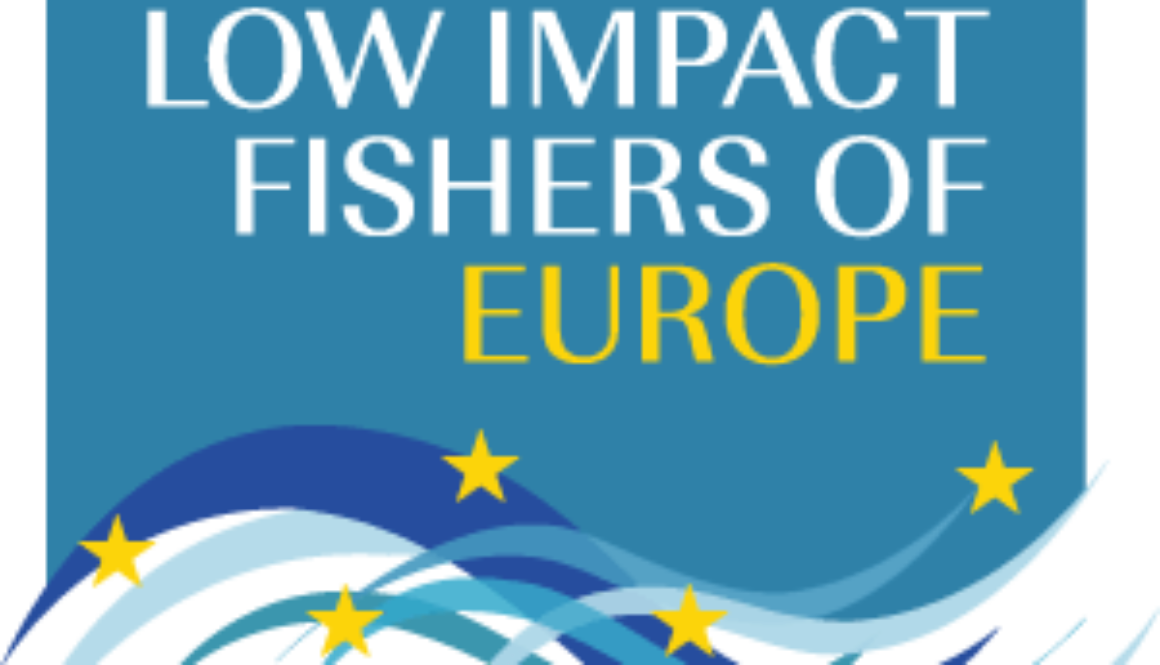
Bass management measures for 2017: recommendations from LIFE
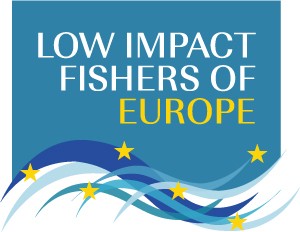
Sea Bass: A major cause for concern
Bass management measures for 2017: recommendations from LIFE, the Low Impact Fishers of Europe Platform.
Brussels, 23 september 2016
Brian O’Riordan
Meeting in Lille, France over two days, member organisations from the Netherlands, France and the UK representing small scale fishers reliant on Bass, discussed and agreed a LIFE position for transmission to the European Commission and Member States.
The state of Bass stocks in the North Sea, English Channel and western waters creates ongoing concerns for many fishermen, which many see as catastrophic.
For some key ports around Lorient in southern Brittany, members reported that catches from hook and line fisheries were only 20% of those even a year ago, and as many as 60% of these small Bass dependent enterprises have gone out of business in 2016.
On the other hand, Bass fishing along the south coast of England has held up in a few areas or decreased only in line with the restrictions imposed in recent times.
Focussing very much on fisheries north of the 48th Parallel, whatever the local situation, members agreed that the current restrictions needed to continue for the time being in light of scientific advice and their own observations.
They did however make clear that any further restrictions must be accompanied by the provision of emergency financial aid if any small scale fishers are to survive until stock levels improve. European Commission sources have informed LIFE that if such a provision is not already included in Member State EMFF Operational Plans, then these plans could be modified to include such.
After exhaustive discussions, members agreed the following position for measures on Bass North of the 48th Parallel:
- The current 6-month moratorium from January to June to be moved to run between November and April inclusive to ensure maximum protection over the main Bass spawning period.
- Where any additional restrictions are imposed for 2017 and beyond, these must be accompanied by adequate financial compensation in order to ensure that small scale fishers are able to survive until stocks improve. An urgent revision of individual Member State Operational Plans may be necessary in order to provide emergency financial support under the European Maritime and Fisheries Fund.
- The current 1% by catch allowance for mobile gears should remain in place. The proposed increase to 5% by-catch allowance should be resisted, incentivising as it does the targeted by-catch of Bass.
- Fisheries managers should give serious consideration to providing incentives to all fishers to avoid Bass wherever possible.
- Member States must prioritize and improve monitoring, control and enforcement of all vessels catching Bass, irrespective of whether targeted or as a by-catch, commercial or recreational. This must include the by-catches of the larger trawlers, both pelagic and demersal and include Danish fly shooters operating in areas of known Bass activity.
- Strengthening of monitoring and enforcement by Member States with regard to both commercial and recreational fishers, including an improved focus on public education related to the marketing of illegally taken Bass. There was a clear failure in implementing previous additional management measures by Member States, importantly including significant delays during the initial introduction phase.
- Whilst recognising the difficulties inherent in attempting to assess the impact of current measures in the short term, LIFE members urged the Commission to pursue what information and data they could in order to more clearly understand the environmental, social and economic impacts of increased regulation.
- Increased protection for existing Bass Nursery Areas, to protect the positive increase in recruitment in recent years from any damaging activities. Member States should also conduct an urgent review leading to the designation of new protection areas where necessary. At the same time there is a clear need to improve management and enforcement in this respect as current Nursery Area protections are largely ineffective.
- With regard to Bass fisheries in the Bay of Biscay, LIFE members stated that, with notable exceptions, similar trends could be observed to those North of 48th parallel, with significantly lower catches being taken. They highlighted the urgent need for improved scientific studies to ensure that Bass management there did not follow the same ruinous route observed further north. Members did recommend a complete moratorium for Bass fishing for February and March, for all metiers operating in the Bay of Biscay.
- Members finally requested for all areas that additional research, to better understand the role of other fishing activities in disturbing the seabass spawning be undertaken.
♦ ♦ ♦


